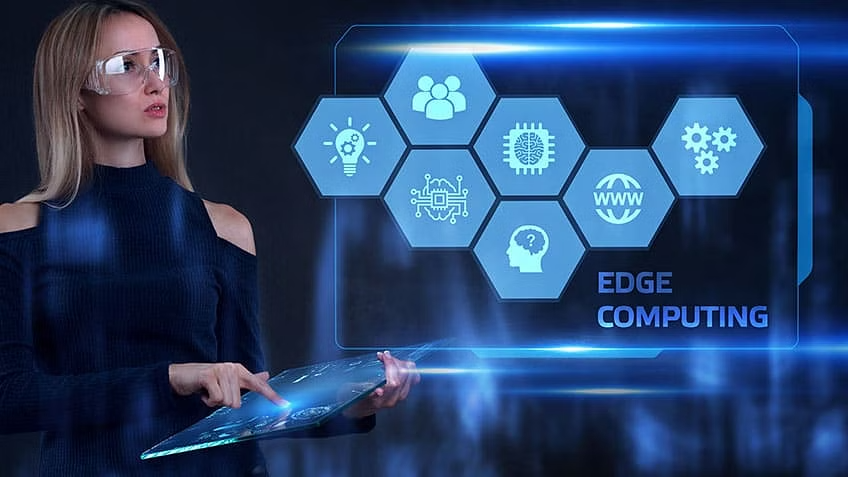In recent years, the proliferation of connected devices and the exponential growth of data have driven the need for more efficient and scalable computing solutions. Traditional cloud computing architectures, while powerful, often struggle to meet the demands of real-time data processing and latency-sensitive applications. Enter edge computing, a paradigm-shifting approach that promises to revolutionize the way we handle data at the network edge. Let’s delve into the intricacies of edge computing and explore how it is reshaping the future of IoT and real-time data processing.
Understanding Edge Computing
Edge computing involves processing data near the source of data generation, rather than relying on a centralized data center or cloud environment. By bringing computing resources closer to where data is produced, edge computing minimizes latency, reduces bandwidth usage, and enhances overall system performance. This distributed computing model enables faster response times, making it ideal for applications that require real-time data processing, such as autonomous vehicles, industrial automation, and remote healthcare monitoring.
One of the key components of edge computing is the deployment of edge nodes or devices, which act as mini data centers at the network edge. These edge nodes are equipped with computing power, storage capacity, and networking capabilities, allowing them to process and analyze data locally. Additionally, edge nodes can communicate with each other and with centralized data centers to offload heavy computational tasks or synchronize data when necessary.
Advantages of Edge Computing
The adoption of edge computing offers several advantages over traditional cloud-based architectures. Firstly, edge computing reduces latency by processing data closer to where it is generated, leading to faster response times and improved user experiences. This is particularly critical for applications such as autonomous vehicles, where even milliseconds of delay can have significant consequences.
Secondly, edge computing enhances data privacy and security by minimizing the need to transmit sensitive information over the network. Since data is processed locally at the edge, organizations can maintain greater control over their data and mitigate the risks associated with data breaches or unauthorized access.
Furthermore, edge computing enables scalability and flexibility in deploying IoT solutions. By distributing computing resources across edge nodes, organizations can easily scale their infrastructure to accommodate growing data volumes and evolving business needs. This distributed architecture also improves fault tolerance and resiliency, as failures at one edge node do not necessarily impact the entire system.
Applications of Edge Computing
The rise of edge computing has paved the way for innovative applications across various industries. In the automotive sector, edge computing is powering advanced driver assistance systems (ADAS) and autonomous vehicles by enabling real-time processing of sensor data for collision avoidance, navigation, and adaptive cruise control. By leveraging edge computing, automotive manufacturers can enhance the safety and efficiency of their vehicles while paving the way for fully autonomous driving.
In the manufacturing sector, edge computing is revolutionizing industrial automation and predictive maintenance. By deploying edge nodes on factory floors, manufacturers can monitor equipment health in real-time, predict potential failures, and schedule maintenance proactively. This predictive maintenance approach minimizes downtime, reduces maintenance costs, and optimizes production efficiency.
In the healthcare industry, edge computing is facilitating remote patient monitoring and telemedicine applications. By equipping patients with wearable devices and edge-enabled medical sensors, healthcare providers can continuously monitor vital signs, detect anomalies, and intervene promptly when necessary. This real-time monitoring capability enables early intervention, reduces hospital readmissions, and improves patient outcomes, especially for individuals with chronic conditions.
Future Trends and Challenges
As edge computing continues to gain momentum, several trends and challenges are shaping its future trajectory. One notable trend is the convergence of edge computing with 5G technology, enabling ultra-low latency and high-bandwidth communication at the network edge. This convergence opens up new possibilities for applications such as augmented reality, virtual reality, and immersive gaming, which require real-time interactions and high-quality multimedia streaming.
However, the widespread adoption of edge computing also presents challenges related to data management, interoperability, and security. Organizations must develop robust strategies for data governance, data sovereignty, and regulatory compliance to ensure the responsible and ethical use of data in edge computing environments. Additionally, interoperability standards and protocols are needed to facilitate seamless integration and communication between diverse edge devices and platforms.
In conclusion, edge computing represents a paradigm shift in how we process and analyze data, offering significant advantages in terms of latency, privacy, scalability, and application performance. By bringing computing resources closer to the source of data generation, edge computing is reshaping the future of IoT and real-time data processing across various industries. However, to fully realize the potential of edge computing, organizations must address challenges related to data management, interoperability, and security while embracing emerging trends such as 5G integration and edge-native applications.
